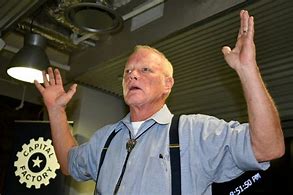
The second instalment on ‘human skills’ of remaining six of the 12 tools examines how to make feelings, actions, communications and thinking productive and rewarding in work places.
The heuristics below have helped me transform Feelings, Actions, Communication and Thinking (F.A.C.T.) in myself, my colleagues and the thousands of people who have survived what I am now calling my “work shocks” (workshop seemed too tame a word).
Impossible is merely difficult
There are dozens of famous examples of everyday occurrences that were labelled “impossible” by some smarty-pants at some point in history. Before their invention, experts scoffed at the notion of airplanes, rockets, home computers and brain surgery. Thought leaders proclaimed radios, telephones, TVs and automobiles to be passing fads that would never achieve commercial success. Because these pundits couldn’t personally imagine how to achieve something, they labelled it “impossible”. But even the smartest human being doesn’t know everything. And the future often brings changes in circumstances that invalidate previous assessments of feasibility.
I’ve developed a healthy disregard for anything labelled impossible. To me that word just means that we haven’t found a way . . . Yet!
Most failure is avoidable
Although I’m equipped to support my clients with sophisticated leadership and team effectiveness tools, the problems they face rarely require more than the most basic models and insights. Most teams continue to fail for entirely predictable and avoidable reasons, such as the failure to build trust, the inability to communicate effectively, the absence of clear, shared goals and a lack of agreement on priorities that must drive the allocation of scarce time, budget and other resources.
A memorable example of this is the story of a whale being tracked using a transmitter attached to its body. It disappeared from the radar immediately upon submerging because the device wasn’t waterproof! Common knowledge and common sense aren’t common practice. It’s the discipline to do what we know that is lacking in so many individuals, teams and organisations.
Creativity is risky and messy
Experiment! Many organisations say that they want more innovative products and services, but don’t provide an environment supportive of the messiness associated with creative endeavours. The creative process is non-linear. Fifty per cent progress towards the goals may not be evident when 50per cent of the budget is spent.
First drafts often fall far short of the final requirements. An unimaginative person might struggle to keep their anxiety at bay as their team lurches unpredictably towards success, while the courageously creative shout the credo “Prototype, don’t perfect!” Teams able to rapidly integrate feedback from experiments and prototypes can achieve far better results than those who obsess over perfection in the first revision.
Make mistakes and fail forward
Risk-taking and mistake-making are a necessary part of the journey to innovation. But we usually assume that mistakes are to be avoided, and failure tends to be surrounded by blame and shame. Rather than playing the blame game, a much healthier and more empowering view is that mistakes are stepping stones towards the goal.
At HP Labs, one innovative team’s guiding credo was “Build a tall junk pile!” Fail fast, fail forward, using feedback to learn and improve along the way. In order to encourage appropriate risks, I require people on my team to make at least 3 mistakes a day – new and more exciting mistakes, of course, not the same ones over and over again.
Change feels uncomfortable
When something is new or different it can push us out of our comfort zone, triggering negative feelings. As a result, many people avoid, or actively resist change. Charles Darwin said, “It is not the strongest of the species that survives, nor the most intelligent. It is the one that is most adaptable to change.”
Many times, in my career I’ve faced challenges that felt overwhelming. At these times I’m filled with a mixture of anticipation and dread.
Recognising my discomfort as an indicator of an exciting challenge, instead of a warning that I should flee, has enabled me to take advantage of opportunities that others might have declined. Now I make a habit of putting a big smile on my face and shouting “Wooooooohoooooooo! I’m uncomfortable!” when those feeling strikes. It’s done wonders for my relationship with change.
You can lead from any chair
Like many people, I once believed that leaders were found at the top of an org chart. But after decades of working with dozens of organisations I’ve seen plenty of people occupying a leader’s chair, but not leading. As a result, I’ve learned that leadership isn’t a position in an organisaation chart or a title on a business card. A leader is someone who acts like a leader, communicates like a leader, and thinks/feels like a leader – regardless of position or title.
This insight carries with it a weighty responsibility. Once we realise that we have the power to make a positive difference we can no longer be content with merely complaining about upper management. In my first corporate job at HP, I pretended that this 100,000 person company was my own, and that what I did mattered. Thinking and acting like an owner gave me the courage to do and say what others only dared to think.
Leadership isn’t always rewarded, but I find it much more rewarding than waiting for solutions from above while complaining about the inadequacies of the management team.
Why Change? Tolstoy said, “Everyone thinks of changing the world, but no one thinks of changing himself.”
The 12 tools under discussion have the power to transform our teams by changing ourselves first. Don’t believe me! Do the experiment and see for yourself. I look forward to hearing about your transformational mindset adventures.
- A Tell report / Writer Kimberly Wiefling is the President of Wiefling Consulting, co-founder of Silicon Valley Alliances, and author of Scrappy Project Management, a global business leadership consultant, and a force of nature – the good kind! She specializes in global team effectiveness – helping teams achieve what seems impossible but is merely difficult. Her latest book is bilingual (English & Japanese), Inspired Organizational Cultures, and has a foreword written by her mentor, Dr Edgar Schein, the father of organizational cultures.











